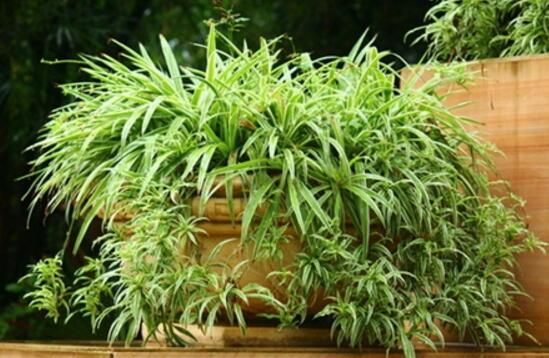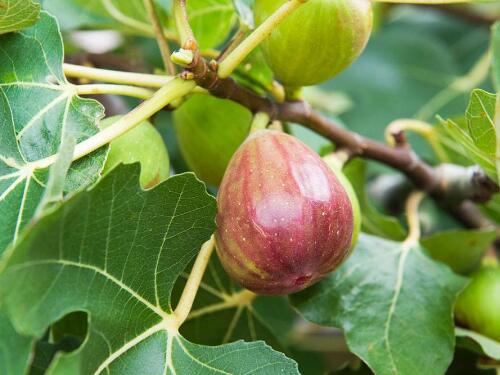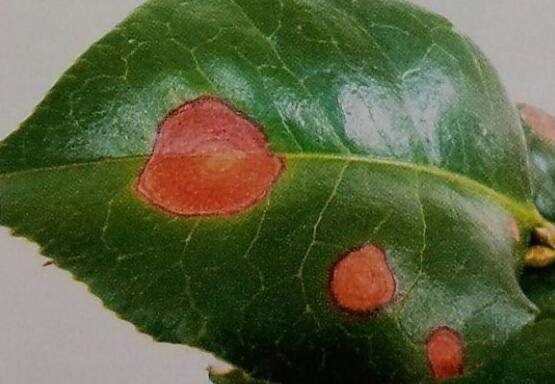What to do when the pest grows? pest control / prevention is very important.
Although the hanging orchid is good-looking and ornamental, what if the occurrence of diseases and insect pests not only affects the beauty, but also leads to the death of the hanging orchid? How should we deal with the disease? The editor gives you a detailed method of pest prevention and control of hanging orchids.
What if the orchid grows worms?

After research, it is found that the pests that often appear on the branches and leaves of Cymbidium are mainly shell insects, nematodes, aphids and whitefly. The symptoms and methods are as follows.
1. Scale insects
Symptoms: yellow leaves, poor plant growth, shedding, growing and dying, yellowish-brown or purplish-brown shells on the leaves, and white, transparent and sticky honey secreted by scale insects.
Control method: cut off the branches and leaves of the long worm, and then spray the medicine according to the number of worms. It can be sprayed with 40% omethoate diluted into 1000 times solution, or 50% malathion diluted into 1500 solution.
2. Nematodes
Symptoms: slow growth of the plant, yellowing of leaves, and finally death of the whole plant.
Prevention and control method: if this kind of situation hanging orchid grows how to do? 15 grams of carbofuran granules with a concentration of 3% can be evenly applied on the way, then covered with 10 cm thick soil, and then watered thoroughly, which can generally remove a variety of pests.
3. Aphids
Symptoms: the plant is malnourished and the leaves are yellow. if there are many aphids, honeydew will be secreted to cover the leaf surface of the orchid.
Prevention and control methods: use 40% of the concentration of imidophos diluted into 1000 times solution spray generally 7-10 days once, continuous spraying 2-3 times can relieve the harm.
4. Whitefly
Symptoms: the leaves are withered and yellow, the wounds on the leaves will rot, and in severe cases, the whole plant will die.
Prevention and treatment: spray with 40% omethoate diluted into 1000 times solution, or spray with 80% dichlorvos EC diluted to 1000 times solution.
Prevention and control of diseases and insect pests of Cymbidium
1. Leaf blight
Symptoms: the leaves turn yellow first, then brown spots, which extend to the base of the leaves until the whole leaf turns brown or grayish brown, and black dots appear on the back of the leaves.
Etiology: higher ambient temperature, more humidity and poor ventilation.
Control methods: control soil moisture, increase organic fertilizers such as phosphate fertilizer and potassium fertilizer, improve the ventilation of the environment, spray with a solution diluted to 600 times with 70% mancozeb, once every 15-20 days, 2-3.
2. White silk disease
Symptoms: purple-brown spots on the leaves, followed by a distinct white mycelium, the plant withered and eventually died.
Causes: high temperature and humidity of environment, stagnant water in soil, poor ventilation and light transmission.
Prevention and control methods: watering should be appropriate, fertilization should be reasonable, specific reference can be made to how to water the orchid. Do not plant too deep, when the disease can be sprinkled with lime powder, once every 15 days, 2-3 times.
3. Stem rot
Symptoms: the disease begins from the old seedling, after the disease, the base of the stem will turn brown, the leaves lose green and begin to droop, and then grow upward until the whole plant dies.
Causes: moist soil, lack of light, poor ventilation.
Prevention and control methods: control soil water and fertilizer, so that the soil is not too wet, give the orchid a certain amount of light and ventilation, which is the basic knowledge of pest control. During the onset of the disease, the powder with a concentration of 77% was diluted to 1000 times the solution and sprayed.
4. Anthrax
Symptoms: the leaves appear yellowish-brown and sunken spots, then expand called dark brown round spots, the leaf tip withered, and then the whole plant dies.
Causes: high humidity and muggy environment, stagnant water in flowerpots, overdense plants and poor ventilation.
Prevention and control methods: control the watering times to avoid too much soil moisture, when the disease with a concentration of 75% chlorothalonil diluted to 1000 times the solution for spraying.
5. Root rot
Symptoms: often appear on the seedlings, the symptoms are not obvious in the early stage, but the root rot increases significantly in the later stage, which leads to the yellowing and wilting of the leaves, and then returns to normal at night.
Causes: lack of light, soil stickiness is easy to harden, and germs invade the soil.
Prevention and treatment: the soil and seeds can be disinfected before planting, and 50% carbendazim is sprinkled on the way during planting, and when the disease occurs, it can be irrigated with 40% root rot ning, once a week.
What to do when the green orchid grows, the pest control of the green orchid / 2 insects and 3 diseases
As a kind of ornamental and drug-taking plant, green orchid is kept at home by many flower friends. However, there are many people and novices, and many of them are not raised in accordance with the breeding methods of green orchids, which often make the plant worms sick, thus affecting the ornamental quality. What about the green turnip orchid worm? Next, let's go with the editor to take a look at the pest control of green orchid.
First, the green orchid growing worm, looking for medicine to spray
Generally speaking, the green orchid has strong adaptability and less occurrence of diseases and insect pests, but when it is poorly grown or poorly cared for, it will also be disturbed by diseases and insect pests. As for the green orchid long worm how to do, in fact, it is very simple, determine the pest, and then spray with medicine. The following are four common diseases and insect pests of green orchid, let's take a look at the prevention and control methods.
2. Disease and pest control of green orchid
1. Aphids
Green orchid is one of the main insect pests, it mainly harms leaves and buds, absorbs a lot of juice, resulting in poor plant growth. Because aphids multiply, they are usually found densely packed, not only frightening, but also very disgusting.
Control method: a small number of aphids can be removed by rinsing with plant ash on the leaf surface; when there are many aphids, spray 1000 times of omethoate EC or 1000 times of fenitrothion EC to control aphids, the effect is good.
2. Scale insects
Once the green orchid worm is found, we can consider it to be a scale insect. The insect is easy to break out in a poorly ventilated environment, and it will attach to the leaves and make them lose their luster. Symptoms of damage: the leaves of green orchid turn yellow, and the plant will die in severe cases.
Control methods: if there are few scale insects, you can wipe off the live insects with 75% spraying essence of cotton, or wipe off the insects with laundry powder; for a long time, spray 1000-15000 times of dichlorvos or 1000 times of 50% marathon emulsion for control.
3. Root rot
In the process of breeding, green orchid often suffers from root rot, which mainly harms the roots of green orchid. Symptoms: root rot, leaves withered and yellow, until death.
Prevention and treatment methods: when the above diseases are found, 50% carbendazim wettable powder can be sprayed 500 times, or it can be irrigated directly; when the disease is serious, pull out the green orchid, remove its rotten roots, and change the soil and basin to plant again.
4. Anthrax
Anthracnose is also a disease easily caused by breeding green orchid, which mainly harms leaves. Symptoms: the diseased leaves will appear at the beginning of a number of light yellow, dark brown or light gray areas, there are many black spots, with the passage of time, it will be infected to the stems and branches, seriously affecting the growth of the plant.
Prevention and treatment: cut off the diseased leaves and burn them centrally to reduce the source of the disease; in severe cases, spray 1000 times of carbendazim or 1000 times of methyl topiramate for antiseptic, which can be effective after 2-3 times.
5. Leaf spot
When the indoor temperature fluctuates greatly in the short term, or too much watering during the dormant period, the green orchid is easy to suffer from leaf spot disease. Symptoms: in the early stages of the disease, there will be many small brown spots on the leaves, and in severe cases, the spots will spread throughout the leaves.
Prevention and control methods: timely removal of diseased leaves and centralized destruction, in order to reduce the source of the disease; spray 65% Dysen zinc 500 times or 25% nitrilazol EC 800 times to prevent and cure the disease, spraying twice every 10 to 15 days can be effective.
What if the pearl orchid grows worms? pest control of the pearl orchid / 4 insects and 3 diseases
Pearl orchid, a common succulent plant, has green leaves and looks like pearls. In life, many flower friends love the pearl orchid very much, but in the process of breeding, because they can not raise, the plant has the symptom of disease, so what about the pearl orchid? The following are 6 kinds of pearl orchid pest control, let's go and have a look!
First, the pearl hanging orchid long worm, spray with medicine
The breeding method of pearl orchid is not difficult, as long as it is carefully maintained in accordance with the method, it can grow very well. But in the breeding process, because of the basin soil stagnant water, poor ventilation and other conditions, will suffer diseases and insect pests, then pearl hanging orchid worms how to do? In fact, it is very simple, flower friends only need to identify insect pests, and then solve the problem of spraying.
II. Disease and insect pest control of Pearl Cymbidium
1. Spring aphid / summer mite
Aphids: Pearl orchids rarely have diseases and insect pests, but aphids in spring are something we need to guard against. The insect mainly harms leaves and buds and absorbs a lot of juice, resulting in poor plant growth. Prevention and treatment: wipe it off with a brush in time, or spray 1500 times omethoate to kill it.
Mite: in addition to the spring aphid, the summer mite is also one of the pests of the pearl orchid, which mainly harms the leaves of the plant, causing the leaves of the orchid to curl, wither and yellow. Control methods: pay attention to ventilation and increase leaf humidity, can reduce the infection of mites; when mites are found, they are killed with 1000 times triclofenac.
2. Scale insects
In addition to aphids and mites, in the case of dense plants and poor ventilation, pearl orchids are also vulnerable to scale insects. The insect will attach to the leaves and make the leaves lose their luster, causing the pearl orchid to wither and, in severe cases, the whole plant will die.
Control method: move the plant to a ventilated place, then cut off the diseased leaves to reduce the source of insects; then spray 50% malathion diluted into 1500 solution for control.
3. Whitefly
One of the common pests that invade the pearl orchid, it is small in size, reproduces quickly, parasites on the phloem of the pearl orchid and absorbs its juice. Whitefly is generally difficult to detect, once it is found to be a large area, when the plant has been sucked away a large amount of juice, very weak.
Control method: after the whitefly is found, the whitefly should be sprayed immediately. 1000 times of imidathion EC or 1000 times of omethoate can be used. The best spraying time is in the early morning when the adult activity of whitefly is weak.
4. Root rot
Pearl orchid is not easy to get sick, but stagnant water and poor ventilation in the basin soil, in addition to causing root rot, root rot may also occur. After suffering from root rot, the root of the pearl orchid will rot, and the leaves will wither and fall off until death.
Prevention and treatment: to find the above symptoms, you can spray 50% carbendazim wettable powder 500 times, or directly irrigate its roots, once a week.
5. Other diseases
Dry branches and leaves: Pearl orchids rarely get sick, but in high temperature and low humidity, it will show symptoms of drying up. Prevention and treatment: usually put it in a semi-shady place, prune the dry branches and leaves, and slowly restore as before. In addition, when the air is very dry, we need to spray water mist around the plant.
Leaf tip blackening: if there is a problem with the soil, or too much watering, it will also affect the normal water absorption of the root system of pearl orchid, and then the leaf tip will blacken. Prevention and cure method: take off the plant, then cut off the broken fibrous root, replace it with sandy soil and put it in a basin, and water it properly to make the pearl orchid grow new fibrous root.
Generally speaking, the pearl orchid is not difficult to maintain, just put it in a ventilated place, and be careful not to pour too much water, it will not suffer from diseases and insect pests. Of course, do not be afraid to find that the pearl orchid worm is sick, just solve it according to the above prevention and control methods. With regard to the prevention and control of diseases and insect pests of the pearl orchid, the editor has introduced it here, hoping to bring help to everyone.
- Prev

What about fig worms? disease and pest control of figs / 1 pest 3 diseases
For plants, diseases and insect pests can be said to be their natural enemies, figs are no exception, if there are flowers of diseases and insect pests, it will lead to fig leaves yellowing and even withering, so we must pay attention to this problem. So what about the fig worm?
- Next

What about the camellias? control of diseases and insect pests of camellias / 4 insect pests and 3 diseases
As one of the top ten famous flowers in China, the beauty of camellia is beyond doubt. Its beautiful flowers, bright colors and charming fragrance are all beloved by people. However, because it is not maintained according to the culture method of camellias, the plant will grow insects and get sick, thus seriously affecting the ornamental, what about the camellia worms?
Related
- Fuxing push coffee new agricultural production and marketing class: lack of small-scale processing plants
- Jujube rice field leisure farm deep ploughing Yilan for five years to create a space for organic food and play
- Nongyu Farm-A trial of organic papaya for brave women with advanced technology
- Four points for attention in the prevention and control of diseases and insect pests of edible fungi
- How to add nutrient solution to Edible Fungi
- Is there any good way to control edible fungus mites?
- Open Inoculation Technology of Edible Fungi
- Is there any clever way to use fertilizer for edible fungus in winter?
- What agents are used to kill the pathogens of edible fungi in the mushroom shed?
- Rapid drying of Edible Fungi

